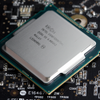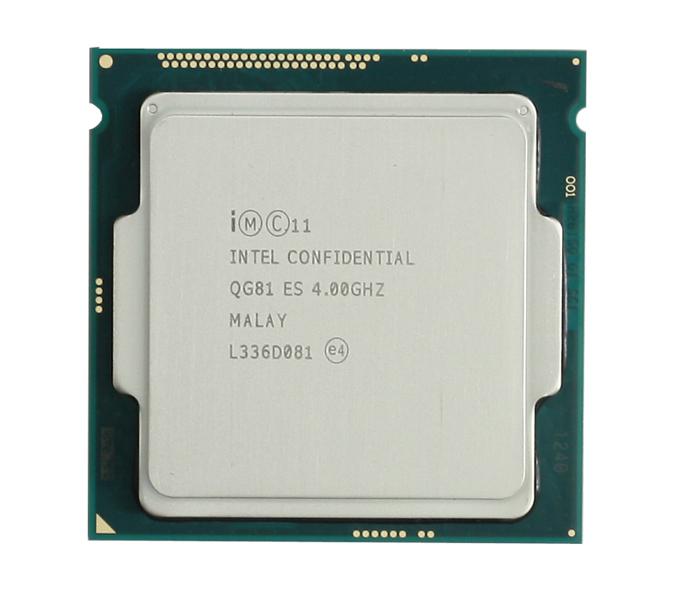The Haswell Architecture
The Haswell (Refresh) Architecture
We'll address some key aspects and a technical overview of the technology and architecture first. Chances are good that you already have read this information over time, if so please do skip on-wards a page or to page 3/4. Right, where Sandy Bridge really was a completely new architecture, its successor Ivy Bridge did share a lot of common denominators. When we look at Sandy versus Ivy Bridge, the foremost complicating factor was moving the architecture towards a smaller production node; Ivy Bridge is a 22 nm processor series. Here's where we land at the architecture that is Haswell. Haswell (and thus all the refresh processors released in May 2014) are also a 100% 22 nm product yet now based on a FinFET process that uses a non-planar transistor that sits around the gate on three sides. Built using a 22 nm process, Haswell is the "tick" in Intel's "tick-tock" development cycle, so Ivy Bridge was just a process size shrink from Sandy Bridge's 32 nm to 22 nm. Haswell is a new generation of micro-architecture. It shares a lot of similarities though. The processor series has the 1.4 Billion transistors and a slightly increased die size of 1.77 mm2, coming from 160 mm2 on Ivy Bridge. Inside the processor die, merged deeply in there, we spot an integrated GPU (I really like to call it a video processor though) based on Intel 4000 series graphics, with much more performance than the last generations, like say a Core i7-2600 processor. That definitely is an improvement in the low-end segment, excellent news for tablets, ultra portables, notebooks, detachables and net-PCs. Obviously the updated AVX2 instruction set extensions are present in Haswell part of other extra instructions sets, which we'll discuss in a minute.
A Bit Of A Change: An Integrated Voltage Regulator
A lot of you already heard, but yet another part we typically see on motherboards now has been moved into the processor. The integrated Voltage Regulator Module (aka VRM) is now located on the processor die, it will fine tune power to the processor and on that end it will help out more in terms of efficiency and power consumption. The integrated VRM will allow independent and precise management of power consumption of each core as well as the the graphics core, the system agent and even the inter connected buses within the Haswell chip. What's the benefit in real world usage you ask? Well, as a rough example, with Haswell it is now possible to halt all logical CPU cores during video playback without halting ring-bus interconnections. In that particular operation mode only the graphics core would consume power. Energy efficiency. This new feature should not be a hindrance to your overclocking experience though. But we'll show you that later on.
What Is Intel Releasing In May 2014?
Intel originally planned to release the Haswell refresh CPUs in April and then distribute the chipsets in May, but after feedback from motherboard clients and channel retail partners, Intel decided to delay the CPU launch and release the two together in May. This means the series 9 chipset has been released as well as the Haswell refresh lineup. As mentioned on page one, this review we will be focussing on the enthusiast class Devil’s Canyon processors. Later in the year you can expect Haswell-E with the LGA 2011-3 socket is going to followup in September or October. There are many new SKUs queued for the Haswell Refresh (most of the SKUs wil get a clock upgrade of 100/200 Mhz) which are the following:
| Model | Cores/threads | Clock Freq | Turbo freq | L3-cache | Gpu | Tdp | price |
|---|---|---|---|---|---|---|---|
| Core i7-4790 | 4/8 | 3600MHz | 4000MHz | 8MB | HD 4600 | 84W | 303 dollar |
| Core i7-4790K | 4/8 | 4000MHz | 4400MHz | 8MB | HD 4600 | 84W | ~339 dollar |
| Core i7-4790S | 4/8 | 3200MHz | 4000MHz | 8MB | HD 4600 | 65W | 303 dollar |
| Core i7-4785T | 4/8 | 2200MHz | - | 8MB | HD 4600 | 35W | 303 dollar |
| Core i5-4690 | 4/4 | 3500MHz | 3900MHz | 6MB | HD 4600 | 84W | 213 dollar |
| Core i5-4690T | 4/4 | 2500MHz | - | 6MB | HD 4600 | 45W | 213 dollar |
| Core i5-4690S | 4/4 | 3200MHz | 3900MHz | 6MB | HD 4600 | 65W | 213 dollar |
| Core i5-4590 | 4/4 | 3300MHz | 3700MHz | 6MB | HD 4600 | 84W | 192 dollar |
| Core i5-4590T | 4/4 | 2000MHz | - | 6MB | HD 4600 | 35W | 192 dollar |
| Core i5-4590S | 4/4 | 3000MHz | 3700MHz | 6MB | HD 4600 | 65W | 192 dollar |
| Core i5-4460 | 4/4 | 3200MHz | 3400MHz | 6MB | HD 4600 | 84W | 182 dollar |
| Core i5-4460S | 4/4 | 2900MHz | - | 6MB | HD 4600 | 65W | 182 dollar |
| Core i3-4360 | 2/4 | 3700MHz | - | 4MB | HD 4600 | 54W | 149 dollar |
| Core i3-4350 | 2/4 | 3600MHz | - | 4MB | HD 4600 | 54W | 138 dollar |
| Core i3-4350T | 2/4 | 3100MHz | - | 4MB | HD 4600 | 35W | 138 dollar |
| Core i3-4150 | 2/4 | 3500MHz | - | 3MB | HD 4400 | 54W | 117 dollar |
| Core i3-4150T | 2/4 | 3000MHz | - | 3MB | HD 4400 | 35W | 117 dollar |
As mentioned, Devils Canyon code-named CPUs are the “K” Unlocked Processors - and will come with an improved heat dissipation design. What everybody really wants is, Haswell-E which is coming in September 2014. Now, you will see more variants in the market of these processors. Intel chooses a handful of different suffixes for the processors, we have a K model, a T model and a S model. A little confusing, but it does make some sense:
- The K suffix denotes a processor with its multiplier unlocked it has a 84 W TDP.
- The S suffix is a 65 W SKU with slightly better power consumption and lower clock frequency
- The T suffix is a 45 W SKU with low power consumption for optimal energy savings
There will also be an R model down the road, which again is a low power product but comes in a BGA package and has GT3e integrated graphics. The TDP remains a bit of a discussion, as really Intel will probably note down the 84 W versions as 95 W on the packaging. Pretty much the design allows 95 W, but 84 Watts or lower is what it'll consume really.
What Is Tested Today?
Today we test the Core i7-4790K, it is the new quad-core flagship processor based on Haswell architecture and supersedes the Core i7-4770K processor.
| Desktop | Cores | Threads | Clock Core / Boost | L3 cache | iGPU | Unlocked |
| Core i7-4790K | 4 | 8 | 4.0 GHz/ 4.4 GHz | 8 MB | HD 4600 | Yes |
| Core i7-4790 | 4 | 8 | 3.6 GHz/ 4.0 GHz | 8 MB | HD 4600 | No |
| Core i5-4770K | 4 | 4 | 3.5 GHz/ 3.9 GHz | 8 MB | HD 4600 | Yes |
| Core i5-4770 | 4 | 4 | 3.4 GHz/ 3.9 GHz | 8 MB | HD 4600 | Yes |
So basically over the 4770K processor that you guys have this is a significant speed increase and even over the non K model 4790 there is a speed increase of 400 MHz.
Paired with these processors came new motherboard chipsets, intended for desktop platform are chipsets like the Z97. For end consumers like you and me the H97 chipset will be less performance targeted and comes with better support for HTPC monitor connectivity. The Z97 chipset is targeted at performance and enthusiast end users allowing much more tweaking and providing performance features. It also brings SATA Express and PCIe M.2 SSD connectivity to the platform. Mind you that all Haswell refresh processors obviously are compatible with your previous generation Series 8 chipsets as well, including Z87 and H87.


